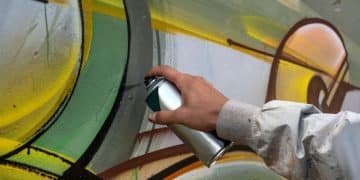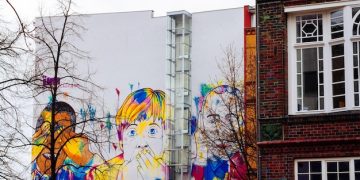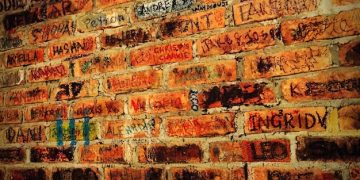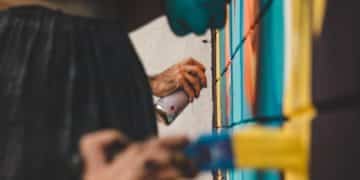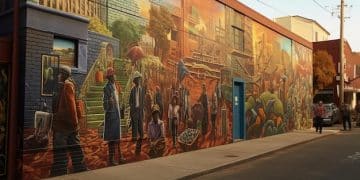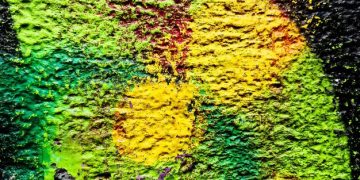Protect Graffiti Art from Vandalism: US Artist Tips
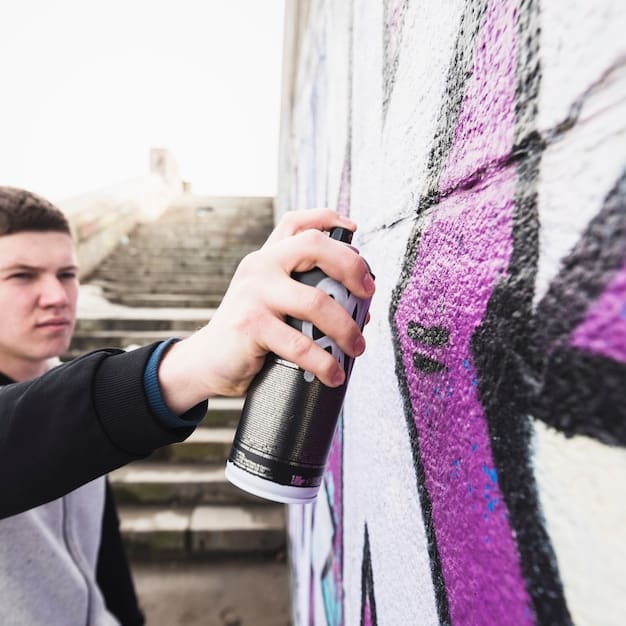
Protecting graffiti art in the US requires artists to adopt proactive strategies, including proper site selection, durable materials, anti-graffiti coatings, community engagement, and legal awareness to safeguard their creations from defacement.
For many artists in the United States, graffiti art is more than just paint on a wall; it’s a powerful form of expression, a cultural statement, and often, a dedicated craft. However, the transient nature of this medium makes it inherently vulnerable. Understanding How to Protect Your Graffiti Art from Vandalism: Practical Tips for US Artists is not just about preserving paint, but about honoring the time, effort, and vision invested in each piece. This guide explores a multifaceted approach to safeguarding your work.
Understanding the Vulnerabilities of Graffiti Art
Graffiti art, by its very nature, is exposed to the elements and human interaction, making it inherently susceptible to defacement. Unlike gallery art, it exists in public spaces, often on surfaces that are easily accessible. This exposure means that while it gains visibility, it also faces a constant risk of being altered, covered, or outright destroyed by those who do not respect its artistic value or who engage in unauthorized tagging.
The urban environment presents unique challenges. Weather elements, such as intense sunlight, rain, and extreme temperatures, can cause fading, cracking, and peeling over time. More immediately, human activity ranges from unintentional damage – like accidental splashes or scrapes – to deliberate acts of vandalism. These acts can stem from rival artists “bombing” or “crossing out” another’s work, or from individuals who simply derive satisfaction from destruction, often referred to as “buffing” or “overpainting.” Understanding these threats is the first step toward effective mitigation.
Common Types of Vandalism Affecting Graffiti
Graffiti art can suffer from various forms of vandalism, each requiring specific countermeasures. “Tagging” is perhaps the most ubiquitous, where individuals quickly spray their names or symbols over existing artwork. This is often done to assert presence or disrespect the original piece. “Buffing” involves painting over the original work with a solid color, usually by city officials or property owners, but sometimes by other artists or vandals looking to create a blank canvas.
- Tagging: Rapid application of names or symbols over existing art.
- Buffing/Overpainting: Covering an artwork with a solid color, often by authorities or rival artists.
- Scratching/Etching: Physical damage to the surface with sharp objects.
- Chemical Attack: Use of solvents or corrosive agents to destroy the paint.
- Physical Removal: Attempts to peel off or chip away the artwork.
Recognizing these distinct forms of attack allows artists to anticipate and prepare. For instance, a clear protective coating might deter casual tagging but would be less effective against determined chemical attacks or physical removal. The motivation behind the vandalism also plays a role; rival artists might be more easily deterred by established artistic norms or community pressure, while random acts of destruction require more robust physical barriers or deterrents.
The anonymous nature of much graffiti creation means that accountability for vandalism is often elusive. This lack of consequence can embolden vandals. Therefore, artists must focus on prevention and protection rather than solely relying on punitive measures after the damage has occurred. Proactive strategies centered on both material science and community dynamics are essential for long-term preservation.
Strategic Site Selection and Preparation
Choosing the right location for your mural or piece is paramount in the battle against vandalism. Not all walls are created equal, and some offer significantly more protection than others. A highly visible wall in a well-trafficked area might seem ideal for exposure, but it also increases the likelihood of unauthorized interaction. Conversely, a secluded spot might reduce random acts of vandalism but also limit legitimate appreciation, so finding a balance is key.
Consider walls that are part of community projects or sanctioned by property owners. These locations often come with built-in protections, such as regular maintenance, surveillance, or an understanding from the surrounding community that the art is valued. Walls that are officially recognized tend to garner more respect and are less likely to be targeted by authorities for removal, which is a form of “buffing” if not explicitly authorized.
Legal Walls and Permitted Spaces
The debate around legal walls versus “illegal” street art is ongoing, but from a protection standpoint, sanctioned spaces offer undeniable advantages. Legal walls, often designated by local municipalities or private property owners, provide a safe haven for artists to create without fear of immediate removal or legal repercussions. These areas are frequently monitored or at least acknowledged, which can act as a deterrent to vandals.
Collaborating with property owners or local authorities can unlock access to walls that come with implied protection. When a property owner grants permission, they often assume some responsibility for the maintenance and protection of the art, ensuring it aligns with their property’s image. This partnership can deter not only random vandals but also other unauthorized artists who might respect the established agreement.
- Clear Permission: Obtain explicit consent from property owners or city officials.
- Community Engagement: Involve local residents and businesses in the art creation process to foster ownership.
- Designated Art Zones: Utilize areas officially designated for public art to reduce risks.
- Visibility & Lighting: Choose well-lit, visible areas that deter clandestine activities.
Before any paint touches the wall, proper surface preparation is crucial. A clean, smooth, and primed surface ensures optimal adhesion of the paint and subsequent protective coatings. Any pre-existing damage, grime, or flaking paint should be addressed. A strong foundation means the art itself is more durable and less susceptible to environmental degradation or easy removal by vandals. Priming the wall also creates a consistent base, allowing protective coatings to perform effectively. This foundational work is often overlooked but is a critical element in the long-term integrity and preservation of the artwork.
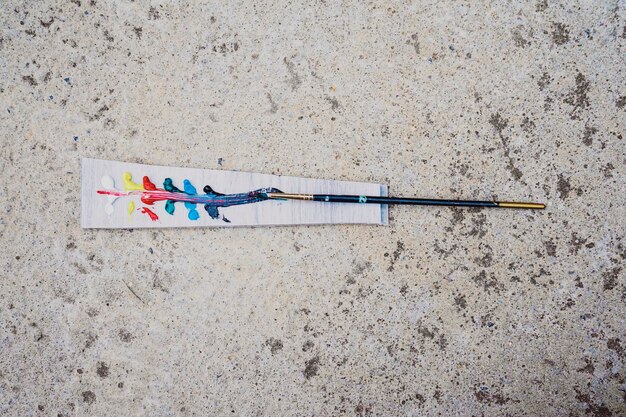
Utilizing Durable Materials and Protective Coatings
The longevity of graffiti art isn’t just about where it’s painted, but what it’s painted with and what it’s painted over. Investing in high-quality materials from the outset can significantly increase a mural’s resistance to fading, weathering, and vandalism. Cheap, low-grade paints might be tempting for their price point, but they often lack the pigment concentration and binding agents necessary to withstand harsh urban conditions or aggressive cleaning attempts.
Professional-grade spray paints designed for outdoor use typically contain UV stabilizers that prevent colors from fading under direct sunlight. They also offer better adhesion to various surfaces, reducing the likelihood of peeling or chipping. Combining these with durable primers and sealants creates a robust system that enhances the art’s intrinsic resilience against environmental degradation.
Anti-Graffiti Coatings and Their Application
Perhaps the most direct line of defense against future vandalism is the application of an anti-graffiti coating. These specialized clear coats form a barrier over the artwork, making it difficult for new paint, markers, or even etched damage to adhere directly to the mural itself. When vandalism occurs, these coatings allow for relatively easy removal of the defacement without damaging the original artwork underneath.
There are generally two main types of anti-graffiti coatings: sacrificial and non-sacrificial. Sacrificial coatings form a clear layer that is a barrier, and when defaced, the coating itself is removed along with the graffiti, leaving the original artwork intact. A new sacrificial layer then needs to be applied. Non-sacrificial coatings, conversely, are permanent layers that allow graffiti to be cleaned off repeatedly without removing the coating itself. Each type has its advantages and disadvantages depending on the expected frequency of vandalism and budget for reapplication.
- Sacrificial Coatings: Remove graffiti by sacrificing the top layer.
- Non-Sacrificial Coatings: Allow repeated cleaning without damaging the coating.
- UV Protection: Contains inhibitors to prevent color fading from sunlight.
- Chemical Resistance: Designed to withstand common cleaning solvents without degradation.
Proper application of these coatings is vital. The surface must be clean, dry, and free of any contaminants. Following the manufacturer’s instructions for mixing, application temperature, and drying times is crucial for the coating to perform as intended. Multiple thin coats are often more effective and durable than a single thick application. Furthermore, it’s advisable to test a small, inconspicuous area first to ensure compatibility with your paints and desired aesthetic finish, as some coatings might slightly alter the sheen or color vibrancy of the artwork.
While these coatings add an initial cost, they can save significant money and effort in the long run by simplifying maintenance and reducing the need for costly repainting. They provide an invisible shield, allowing the art to be enjoyed for years, even in high-risk areas, by transforming cleaning from a destructive process into a restorative one.
Community Engagement and Guardianship
Beyond paints and coatings, one of the most powerful layers of protection for graffiti art comes from the community itself. When a piece of art is embraced and valued by local residents, it gains an informal network of guardians. People are less likely to deface something they feel connected to, and they are more likely to report or intervene if they see someone else doing so. Fostering this sense of ownership is a proactive step that can significantly deter vandalism.
Artists can achieve this by involving the community in the art process. This might include holding public workshops, soliciting ideas for murals, or inviting local residents to help with non-artistic tasks like wall preparation or clean-up. When people contribute to a project, it becomes “their” art, not just the artist’s. This collective responsibility transforms passive appreciation into active guardianship.
Organizing Community Watch & Maintenance
Formalizing community involvement through initiatives like “art watch” programs or designated maintenance groups can provide a structured approach to protection. Local residents, businesses, or even neighborhood associations can agree to periodically check on the artwork, report any vandalism, or even organize clean-up efforts. This proactive monitoring acts as a visible deterrent to potential vandals, signaling that the art is cared for and regularly observed.
Establishing clear communication channels is essential. This could involve setting up a dedicated email address, a social media group, or a direct line to a community liaison where residents can quickly report any issues. Swift response to minor acts of vandalism can prevent them from escalating into more significant damage. A community that acts quickly demonstrates that the art is valued and protected.
- Public Art Tours: Highlight the artworks to boost pride and visibility.
- Volunteer Clean-up Days: Regular maintenance strengthens community bonds and deters vandals.
- Reporting Protocols: Establish clear methods for reporting vandalism to authorities or owners.
- Local Partnerships: Collaborate with businesses and schools for ongoing support.
Engaging local businesses also offers a strategic advantage. Businesses located near artworks have a vested interest in maintaining the aesthetic appeal of their surroundings. They might be willing to offer surveillance, provide resources for cleaning, or even financially support maintenance efforts. Integrating the art into the local business landscape strengthens its presence and value within the urban fabric. This symbiotic relationship between art, community, and commerce creates a robust ecosystem that naturally deters vandalism and promotes preservation. Over time, a well-cared-for mural can become a landmark, further entrenching its status and fostering even greater respect within the community.
Deterrence Through Visibility and Surveillance
Beyond community goodwill, practical measures like increased visibility and active surveillance play a critical role in deterring vandalism. Vandals, by nature, prefer anonymity. They are less likely to act if they believe they are being watched or if their actions could be easily recorded. Strategically placing artworks in well-lit areas or near security cameras can significantly reduce the risk of defacement.
Bright, consistent lighting around a mural, especially at night, creates an environment where mischievous acts are difficult to conceal. This not only deters vandals but also enhances the artwork’s visibility and allows it to be appreciated around the clock. Combining good lighting with adequate natural light during the day makes the location a less appealing target for those seeking to act covertly.
CCTV, Motion Sensors, and Lighting Solutions
Technological solutions offer a more direct form of surveillance. Installing CCTV cameras that cover the artwork’s area is a powerful deterrent. Visible cameras often make vandals think twice, and if vandalism does occur, the footage can provide crucial evidence for identification and prosecution. The mere presence of a camera, even if not constantly monitored, can be enough to shift a vandal’s attention elsewhere.
Motion-activated lighting or even sound alarms can add another layer of protection. These systems activate when someone approaches the artwork, startling potential vandals and drawing attention to their presence. While these might be more suitable for private property or specific high-value installations, they demonstrate a commitment to protection that can further discourage illicit activities. Even without overt cameras, the perception of being watched can be effective.
- Visible Cameras: Install security cameras in clear view.
- Motion-Activated Lighting: Brighten the area when movement is detected.
- Proximity to Public Spaces: Locate art in areas with natural human traffic.
- Discouraging Secrecy: Avoid dark corners or secluded spots that invite clandestine activities.
Furthermore, simply placing the artwork in a highly visible area, such as near busy pedestrian walkways, storefronts, or public transportation hubs, creates a form of “social surveillance.” The consistent presence of passersby means that any attempt at vandalism is more likely to be noticed. This collective observation, even without formal monitoring, creates a less inviting environment for those looking to cause harm. A well-placed mural becomes part of the daily landscape, an accepted and observed element that is harder to casually disrespect. This integrated approach of technology, strategic placement, and community awareness builds a formidable defense against intentional defacement.
Rapid Response and Restoration Strategies
Despite all preventative measures, vandalism can still occur. When it does, a swift and efficient response is critical. The longer graffiti art remains defaced, the more it signals neglect, which can invite further acts of vandalism. A quick clean-up, conversely, demonstrates that the art is valued and maintained, deterring repeat offenders and reinforcing community respect.
Having a pre-formulated plan for rapid response is essential. This includes identifying who is responsible for the clean-up (e.g., the artist, property owner, community volunteers), ensuring they have access to the necessary materials, and establishing clear communication channels to report incidents. The goal is to minimize the time between damage occurring and restoration being completed.
Cleaning Techniques and Materials for Graffiti Removal
The success of restoration heavily depends on the type of paint used for the original artwork and the protective coatings applied. For murals protected by sacrificial coatings, the process usually involves applying a solvent that dissolves the top layer along with the new graffiti, then rinsing and reapplying a fresh sacrificial coat. This method is highly effective as it doesn’t harm the original artwork.
For non-sacrificial coatings, specialized graffiti removers are used that break down the vandalizing paint without affecting the underlying protective layer. It is crucial to use removers specifically designed for the type of protective coating and the type of vandalizing paint (e.g., spray paint, marker). Testing a small, inconspicuous area first is always recommended to avoid accidental damage to the original artwork.
- Assess Damage Swiftly: Evaluate the extent and type of vandalism quickly.
- Keep Supplies Ready: Store appropriate cleaning agents and protective coating materials.
- Document Before Cleaning: Take photos of the vandalism for records and potential reporting.
- Professional Assistance: Consult or hire professionals for severe or complex cases.
For artworks without protective coatings, removal becomes more challenging. Depending on the original paint and surface, methods may include pressure washing, chemical strippers, or even carefully painting over the defacement with colors that match the original artwork. The latter is often a last resort, as it can be difficult to perfectly match colors and textures, potentially altering the original artist’s intent.
Beyond the technical aspect of cleaning, the act of restoring also sends a powerful message. It communicates to both the community and potential vandals that the artwork is cared for and that acts of vandalism will not be tolerated or allowed to permanently mar the piece. This consistent vigilance and restoration effort solidifies the art’s place within the community and reinforces its value, encouraging respect and deterring future attacks.
Reporting Vandalism and Legal Avenues
When vandalism occurs, merely cleaning it up is only half the battle. Reporting the incident to the appropriate authorities is a crucial step, regardless of whether a suspect is known. This helps to create a record of the incident, contributes to understanding crime patterns, and often aids in allocating resources for prevention and enforcement. Ignoring vandalism can inadvertently convey a message of permissiveness, potentially leading to more frequent or severe incidents.
For public art or sanctioned murals, reporting to the local police department or community services is often the first step. Providing clear descriptions, photographs, and any potentially relevant information (like time of day, type of paint used, or witness accounts) can assist investigations. Even if arrests are rare, official reporting helps to highlight the problem and can contribute to changes in local policies or greater vigilance.
Pursuing Legal Recourse Against Perpetrators
While often challenging, pursuing legal recourse against perpetrators of graffiti vandalism is possible, particularly if the artist has a clear agreement with the property owner and the artwork is considered legally protected. Vandalism, including defacing public or private property with graffiti, is a criminal offense in all US states, albeit with varying degrees of severity and penalties.
If a suspect is identified through surveillance footage, witness testimony, or other means, the artist or property owner can press charges. Penalties can range from fines and community service to jail time, particularly for repeat offenders or significant damage. Restitution for damages is also a potential outcome, requiring the vandal to cover the costs of cleaning and restoration.
- Detailed Documentation: Photograph vandalism from multiple angles before cleaning.
- File a Police Report: Officially report the incident to local law enforcement.
- Contact Property Owner: Inform the property owner or commissioning body promptly.
- Consult Legal Counsel: Seek advice on potential civil or criminal action if a suspect is identified.
Beyond criminal charges, artists or property owners might also explore civil lawsuits to recover damages, particularly if the cost of restoration is substantial. This often requires substantial evidence and a clear identification of the perpetrator. It’s important to understand the legal landscape in your specific jurisdiction and consult with legal professionals who specialize in property damage or intellectual property law, as the unauthorized alteration of an artwork might also have implications under the Visual Artists Rights Act (VARA) if the art qualifies for such protection.
The act of pursuing legal avenues, even if it doesn’t always result in conviction, sends a strong message. It reinforces the idea that graffiti art is not disposable and that its destruction carries consequences. This legal deterrence, combined with physical protection and community engagement, forms a comprehensive strategy for safeguarding artistic expression in the urban landscape.
Advocacy and Education for Graffiti Art Preservation
Beyond individual efforts, fostering broader appreciation and understanding of graffiti art plays a crucial role in its long-term preservation. Many acts of vandalism, particularly “buffing” by city authorities, stem from a lack of recognition of graffiti as a legitimate art form. Advocacy groups and educational initiatives can bridge this gap, promoting dialogue and highlighting the cultural, historical, and artistic value of this often-misunderstood medium.
Artists themselves, along with art historians, urban planners, and community leaders, can become advocates. This involves speaking out about the importance of graffiti art, organizing exhibitions, and participating in public discussions about urban aesthetics and artistic freedom. The more the public understands and values graffiti, the greater the pressure on authorities and individuals to protect rather than destroy it.
Public Awareness Campaigns and Workshops
Public awareness campaigns can reshape perceptions around graffiti art. These campaigns might involve social media initiatives showcasing celebrated murals, local news features on artists and their work, or events that highlight the positive contributions graffiti art makes to urban environments. The goal is to move beyond stereotypes and present graffiti as a vital part of contemporary culture.
Workshops, especially those targeted at youth, can instil respect for both the art form and the property it adorns. Teaching the principles of responsible graffiti art, differentiating between tagging and murals, and discussing the legal and ethical implications of unauthorized work can help nurture a new generation that respects boundaries and artistic expression. These programs can also serve as a positive outlet for creative energy, steering individuals away from destructive tagging.
- Art History Initiatives: Incorporate graffiti art into local art history curricula.
- Curated Exhibitions: Showcase street art in galleries or public spaces.
- Dialogue with City Planners: Advocate for designated legal walls and public art programs.
- Artist Spotlights: Feature local graffiti artists to humanize the art form.
Furthermore, advocating for policies that support public art, including graffiti murals, can have a systemic impact. This might involve pushing for municipal art funds, establishing clear guidelines for legal art spaces, or developing expedited procedures for cleaning authorized art that has been vandalized. When cities formally recognize and support graffiti art, it gains a layer of official protection and legitimacy, making it harder for generic anti-graffiti efforts to indiscriminately remove it.
Ultimately, a shift in public perception is the strongest long-term defense. By nurturing appreciation through education and active advocacy, artists and their allies can transform graffiti art from a transient, often threatened, medium into a celebrated and protected component of the urban landscape, ensuring its legacy for future generations. This cultural shift creates a protective atmosphere where art thrives and vandalism diminishes.
| Key Practice | Brief Description |
|---|---|
| 📍 Strategic Location | Choose visible, legal, or community-supported walls. |
| 🛡️ Protective Coatings | Apply anti-graffiti clear coats for easy cleaning. |
| 🤝 Community Engagement | Foster local ownership and guardianship of the artwork. |
| 🚨 Rapid Response | Clean up vandalism quickly to deter further attacks. |
Frequently Asked Questions
▼
A sacrificial anti-graffiti coating is a clear protective layer applied over artwork that is designed to be removed along with any new graffiti. Once defaced, the sacrificial layer is dissolved or peeled off, taking the vandalism with it, and then a new layer is reapplied to protect the original mural underneath. This method ensures the original artwork remains untarnished.
▼
Community involvement fosters a sense of ownership and guardianship over the artwork. When locals feel connected to a mural, they are less likely to deface it and more likely to report or intervene if others do. This informal surveillance and collective care act as a powerful deterrent, signaling that the art is valued and protected within its environment.
▼
Yes, vandalism, including the defacement of graffiti art, is a criminal offense in the US. If a perpetrator is identified, you or the property owner can file a police report and potentially press charges. Legal recourse can lead to fines, community service, or even jail time, and may include restitution for cleanup and restoration costs, depending on state laws and the extent of damage.
▼
For durable outdoor graffiti art, professional-grade spray paints specifically designed for exterior use are highly recommended. These paints typically contain UV stabilizers to prevent fading from sunlight and strong binding agents for optimal adhesion to surfaces. Investing in higher quality paints ensures better longevity and resistance against environmental wear and tear, reducing the need for frequent touch-ups and maintaining vibrancy.
▼
Rapid cleanup is crucial because prolonged defacement can signal neglect, potentially inviting further vandalism. A swift response demonstrates that the artwork is cared for and maintained, which deters repeat offenders and reinforces respect for the art within the community. It also minimizes the time the artwork appears marred, preserving its aesthetic appeal and the artist’s original intent.

Conclusion
Protecting graffiti art from vandalism is a complex endeavor, requiring a blend of foresight, material science, and social engagement. For US artists, this means not only selecting the right location and applying durable finishes and anti-graffiti coatings, but also proactively engaging with communities to foster a sense of collective guardianship. Swift response to defacement, coupled with awareness of legal avenues, reinforces the value of the art, signaling that it is respected and cared for. Ultimately, the resilience of graffiti art lies not just in its paint, but in the layers of protection, community support, and advocacy that surround it, ensuring these vibrant expressions continue to enrich urban landscapes for years to come.
